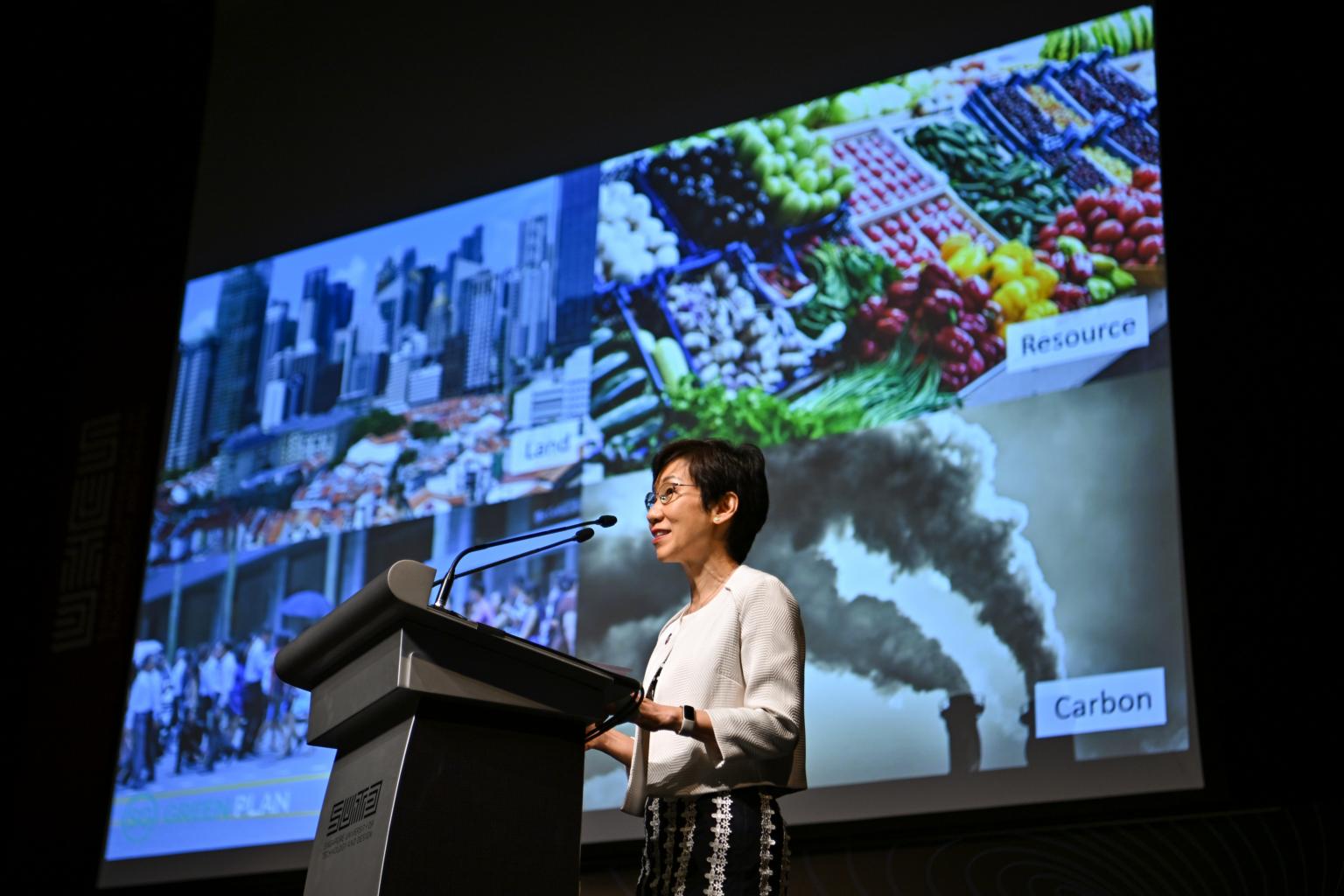Make processes, products sustainable by design to overcome Singapore's constraints: Grace Fu
Sign up now: Get ST's newsletters delivered to your inbox

Minister for Sustainability and Environment Grace Fu speaking at the SUTD's Design Innovation Forum on March 15, 2022.
ST PHOTO: LIM YAOHUI
Follow topic:
SINGAPORE - Can Singapore, with just 1 per cent of its land area set aside for farming, achieve its target of producing 30 per cent of its nutritional needs by 2030?
Constraints and obstacles will abound as the resource-scarce Republic moves to reduce its carbon footprint, but a "systems-level" approach can help overcome them, said Minister for Sustainability and the Environment Grace Fu.
Designating Lim Chu Kang as a high-tech food zone, for instance, enables the production of food to be designed in a manner that is sustainable and resource-efficient, she said.
Circular economy principles can also be employed by different industries in the vicinity.
"For example, soup stock can be made from fish trimmings, while the organic waste of poultry farms can be valorised as fertilisers for the vegetable farms," Ms Fu said.
She was speaking at the Design Innovation Forum organised by the Singapore University of Technology and Design (SUTD) in partnership with The Straits Times held on Tuesday (March 15) at the university.
In line with the theme of the event, "A More Sustainable and Happier World by Design", the minister touched on different ways that products and processes could be designed to improve sustainability.
Sustainably designed products would reduce waste in production, encourage the right consumer behaviour and enable end-of-life recycling.
The minister cited how the exhibition panels used in SUTD's Open House were made entirely of recycled material that could be assembled, stacked and stored without any glue or fastener and easily recycled.
Ms Fu said: "I was delighted to learn that for SUTD's Open House, the exhibition panels are made entirely from recyclables, and are designed to minimise waste from fabrication."
Another way to boost sustainability would be to design processes that reuse materials already available.
She highlighted Tuas Nexus, an integrated waste treated facility that encompasses a water reclamation plant, materials sorting and recovery plant, an anaerobic facility that turns a mix of food waste and water sludge into biogas.
Previously, wastewater was only treated for water reclamation, with sludge from this process disposed of in the landfill in Pulau Semakau without extraction of any biogas energy.
Not only is the biogas harnessed to power the wastewater facility, but the process of mixing food waste triples the yield of this renewable energy source.
Ms Fu added: "Process redesign enables us to optimise resources and carbon footprint and turn our scarcity into a competitive advantage."
The Singapore Green Plan needs an all-of-society effort, she said.
"Our sustainability blueprint is a work-in-progress, to be designed, to be innovated," said Ms Fu.
"We need innovation in products, processes, systems and our society. It is up to the humanist, scientist and artist within us to make our vision for a better future a reality."

